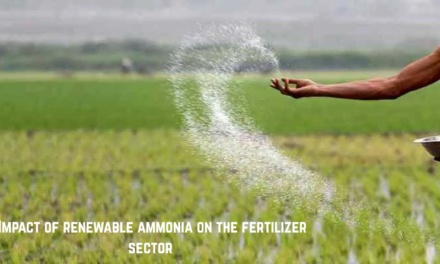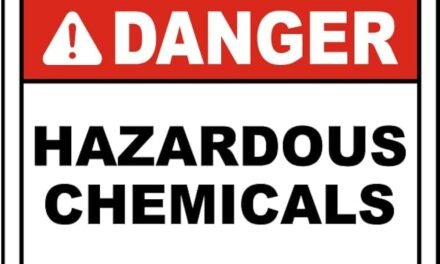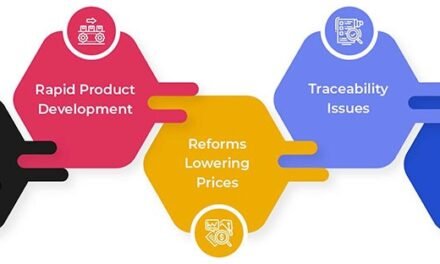The chemical industry is actively addressing sustainability and environmental impact by implementing a variety of strategies and practices aimed at reducing its ecological footprint, improving resource efficiency, and contributing to broader environmental goals. These efforts are driven by both regulatory pressures and the growing demand from consumers, investors, and governments for more sustainable practices. Here are the key ways in which the chemical industry is addressing sustainability and environmental impact:
1. Reduction of Greenhouse Gas Emissions
- Energy Efficiency Improvements: Chemical companies are focusing on improving energy efficiency in their production processes. This includes adopting advanced technologies such as heat recovery systems, optimized reaction pathways, and better process control to minimize energy consumption.
- Renewable Energy Integration: Many chemical companies are transitioning to renewable energy sources (e.g., solar, wind, biomass) to power their facilities. This reduces the carbon footprint associated with energy-intensive chemical production.
- Carbon Capture, Utilization, and Storage (CCUS): The industry is exploring carbon capture technologies to capture CO2 emissions from industrial processes and either store them underground or repurpose them for use in other applications (e.g., in the production of chemicals, fuels, or construction materials).
- Electrification of Chemical Processes: Some companies are exploring electrification of their chemical processes as a way to reduce the reliance on fossil fuels. This approach leverages cleaner electricity to power chemical reactions instead of using traditional methods that rely on combustion.
2. Transition to Circular Economy
- Recycling and Upcycling: The chemical industry is working towards creating products that are recyclable or made from recycled materials. Many companies are focusing on developing chemicals and materials that can be fully recycled at the end of their life, reducing waste and promoting a circular economy.
- Chemical Recycling: In addition to traditional mechanical recycling, chemical recycling processes (also called advanced recycling) break down plastic waste into its basic chemical components, which can then be reused to make new products. This helps close the loop on plastic waste.
- Product Design for Recyclability: Many companies are designing products and packaging with the goal of ensuring that they can be easily recycled or reused. This includes reducing the complexity of packaging materials and avoiding the use of mixed plastics that are difficult to recycle.
- Bio-based Materials: The use of renewable, bio-based raw materials instead of petroleum-based feedstocks is also a key element of the circular economy. These materials can often be more sustainably sourced, have a smaller carbon footprint, and can be more easily returned to nature through biological processes.
3. Sustainable Manufacturing Processes
- Green Chemistry: The principles of green chemistry focus on designing chemical products and processes that reduce or eliminate the use and generation of hazardous substances. This includes:
- Safer solvents and reagents: Reducing or replacing toxic chemicals in the production process.
- Solvent-free reactions: Developing new methods for chemical synthesis that don’t rely on organic solvents, which can be hazardous to health and the environment.
- Energy-efficient reactions: Using catalysts, microwaves, or other techniques that reduce the energy needed for chemical reactions.
- Process Intensification: This involves making chemical processes more efficient by using smaller, more efficient equipment that reduces the need for raw materials, energy, and space. It also often leads to lower emissions and waste production.
- Waste Minimization: The chemical industry is increasingly adopting practices that minimize waste generation, such as zero-waste production techniques, process optimization, and the recovery and reuse of by-products.
4. Sustainable Supply Chain and Raw Materials Sourcing
- Sustainable Sourcing of Raw Materials: The industry is focusing on sourcing raw materials more sustainably. This includes using renewable or responsibly sourced feedstocks, reducing the dependency on fossil fuels, and incorporating more sustainable agricultural practices for materials like bio-based chemicals.
- Supply Chain Transparency: Companies are working to increase transparency in their supply chains, ensuring that suppliers also adhere to sustainable and ethical practices. This includes working with suppliers who prioritize sustainability in their production and procurement methods.
- Carbon Footprint Reduction Across the Supply Chain: The chemical industry is looking to reduce the carbon footprint of not only its own production facilities but also across the supply chain by working with suppliers and logistics partners to reduce emissions from transportation, packaging, and distribution.
5. Sustainable Product Development
- Eco-friendly Products: The chemical industry is developing products that are more environmentally friendly, such as biodegradable plastics, low-impact solvents, and sustainable cleaning products. This includes creating alternative chemicals that do not harm human health or the environment.
- Bio-based Chemicals: The use of bio-based chemicals (e.g., from plant or algae sources) is growing in the industry as part of efforts to reduce dependency on fossil fuels and decrease the environmental impact of production. These products are typically more renewable and can be more easily integrated into circular systems.
- Reduction of Toxicity: Efforts are being made to reduce the toxicity of chemicals, especially in consumer products, by designing safer alternatives and using fewer harmful substances during manufacturing.
6. Water Conservation and Pollution Control
- Water Efficiency: Chemical production is water-intensive, but companies are implementing measures to reduce water consumption and improve water-use efficiency. This includes using water recycling systems within facilities, optimizing cooling processes, and reducing water waste.
- Wastewater Treatment: Chemical companies are investing in advanced wastewater treatment technologies to reduce the discharge of harmful chemicals into natural water sources. These treatments help ensure that effluents meet regulatory standards and do not harm aquatic ecosystems.
- Zero Liquid Discharge (ZLD) Systems: Some chemical companies have adopted ZLD systems, which treat and recycle nearly all wastewater back into the production process, leaving minimal waste to be disposed of.
7. Collaboration and Industry Standards
- Industry Initiatives: Many companies are working together to address common sustainability challenges through collaborative initiatives, such as the Responsible Care initiative, which promotes environmental, health, safety, and security improvements across the chemical industry.
- Partnerships with Environmental Organizations: Chemical companies are increasingly partnering with environmental NGOs, governments, and other stakeholders to address key sustainability challenges, such as plastic pollution, water scarcity, and climate change.
- Sustainable Development Goals (SDGs): Many chemical companies align their sustainability strategies with the United Nations SDGs to ensure they are contributing to global goals related to climate action, life on land and below water, responsible consumption, and clean energy.
8. Advancements in Biotechnology
- Biotechnology and Green Chemistry: Biotechnology is playing an increasingly important role in sustainable chemical production, with companies exploring bio-based chemicals and bioengineering to create products more efficiently and with less environmental impact. Examples include bio-based surfactants, enzymes, and bioplastics.
- Fermentation Processes: The chemical industry is exploring fermentation and other biotechnological methods as alternatives to traditional chemical synthesis, which can be more sustainable and use renewable feedstocks.
9. Circular Business Models
- Product Take-back Programs: Some chemical companies are implementing programs that take back used products for recycling or reuse. This is part of a broader effort to minimize waste and promote a circular business model.
- Remanufacturing and Refurbishing: Companies are also engaging in remanufacturing processes where old chemical products or materials are reused and refurbished to create new products.
Conclusion
The chemical industry is making significant strides in addressing sustainability and environmental impact through a variety of innovative approaches. These efforts include reducing greenhouse gas emissions, adopting cleaner and more energy-efficient technologies, transitioning to bio-based feedstocks, and improving waste management and recycling systems. While challenges remain, the chemical industry’s increasing focus on sustainability is transforming it into a critical player in the global move toward a more sustainable and circular economy.
Hashtags
#SustainableChemistry #GreenChemistry #EcoFriendlyChemicals #ChemicalSustainability #EnvironmentalImpact #CircularEconomy #EcoInnovation #GreenManufacturing #CarbonFootprint #CleanChemistry #SustainableManufacturing #ChemicalsForGood #ZeroWasteChemistry #SustainabilityInChemicals #EnvironmentalSolutions #GreenTech #SustainableChemicals #ClimateAction #ChemicalRecycling #Decarbonization

















